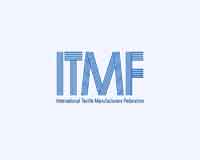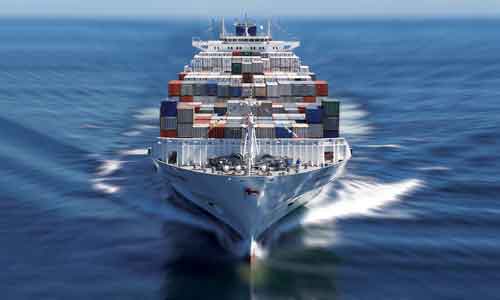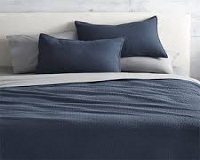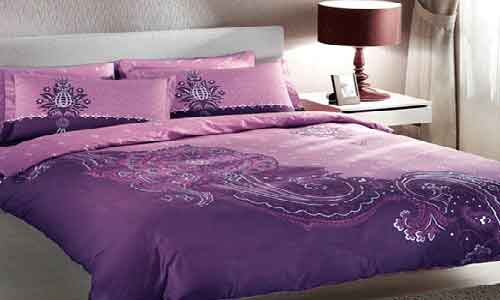FW
"The International Textile Manufacturers Federation (ITMF) released the results of the 40th annual International Textile Machinery Shipment Statistics (ITMSS). The report covers six segments of textile machinery, viz, spinning, draw-texturing, weaving, large circular knitting, flat knitting and finishing. As per the report, short-staple spindles, long-staple spindles, and open-end rotors respectively clocked in a growth of 21 per cent, 46 per cent, and 24 per cent in deliveries from 2016."
 The International Textile Manufacturers Federation (ITMF) released the results of the 40th annual International Textile Machinery Shipment Statistics (ITMSS). The report covers six segments of textile machinery, viz, spinning, draw-texturing, weaving, large circular knitting, flat knitting and finishing. As per the report, short-staple spindles, long-staple spindles, and open-end rotors respectively clocked in a growth of 21 per cent, 46 per cent, and 24 per cent in deliveries from 2016. Similarly, the number of shipped draw-texturing spindles and shuttle-less looms increased 23per cent and 13 per cent respectively. Shipments of new electronic flat knitting machines and finishing machines of ‘fabric discontinuous’ category rose by 44 per cent year-on-year. In contrast, deliveries of circular knitting machines stagnated in 2017 and finishing machines of the category ‘fabrics continuous’ fell 2 per cent.
The International Textile Manufacturers Federation (ITMF) released the results of the 40th annual International Textile Machinery Shipment Statistics (ITMSS). The report covers six segments of textile machinery, viz, spinning, draw-texturing, weaving, large circular knitting, flat knitting and finishing. As per the report, short-staple spindles, long-staple spindles, and open-end rotors respectively clocked in a growth of 21 per cent, 46 per cent, and 24 per cent in deliveries from 2016. Similarly, the number of shipped draw-texturing spindles and shuttle-less looms increased 23per cent and 13 per cent respectively. Shipments of new electronic flat knitting machines and finishing machines of ‘fabric discontinuous’ category rose by 44 per cent year-on-year. In contrast, deliveries of circular knitting machines stagnated in 2017 and finishing machines of the category ‘fabrics continuous’ fell 2 per cent.
Growth in international shipments
International shipments of new short-staple spindles grew by 1.65 million spindles for the first time since 2013. Most of these were shipped to Asia, shipments rose by almost 24 per cent year-on-year. Global shipments of long-staple (wool) spindles rose 46 per cent to nearly 165,000 in 2017. The majority of long-staple spindles (68 per cent) were shipped to China.
Most of these were shipped to Asia, shipments rose by almost 24 per cent year-on-year. Global shipments of long-staple (wool) spindles rose 46 per cent to nearly 165,000 in 2017. The majority of long-staple spindles (68 per cent) were shipped to China.
Shipments of open-end rotors rose by 24 per cent to a level over 788,000 rotors in 2017. About 85per cent of worldwide shipments of open-end rotors were destined for Asia. Thereby, deliveries to Asia increased about 15 per cent to nearly 674,000 rotors. However, China, the world’s largest investor in open-end rotors, increased its investments by only 6 per cent in 2017 when countries like Iran, Brazil, Uzbekistan, and Japan saw 2 to 4 times more deliveries compared to 2016. The world’s second and third largest investors in 2016 were Turkey and India.
For a fine texture
Global shipments of single heater draw-texturing spindles (mainly used for polyamide filaments) decreased by 87per cent from nearly 8’500 in 2016 to 1,060 in 2017. With a share of 50 per cent, Asia is where most of the single heater draw-texturing spindles were shipped, followed by Eastern and Western Europe with a share of 36 and 8 per cent, respectively.
In double heater draw-texturing spindles (mainly used for polyester filaments), global shipments increased by 27 per cent on an annual basis to about 340,000 spindles. Asia’s share of worldwide shipments amounted to 90 per cent. Thereby, China remained the largest investor accounting for 66per cent of global shipments.
Weaving & Knitting threads
In 2017, worldwide shipments of shuttle-less looms increased 12per cent to 95,400 units. Thereby, shipments of air-jet, water-jet, and rapier/projectile shuttle-less looms increased by 18 per cent (to almost 27,000), 14 per cent (to 36,200), and 7 per cent (to 32,000), respectively.
Global shipments of large circular knitting machines rose slightly by 0.12per cent to close to 28,000 units in 2017. Asia is also the world’s leading investor in this category. Nearly, 84per cent of all new circular knitting machines were shipped to Asia in 2017. With 39 per cent of worldwide deliveries, China was the single largest investor. In 2017, electronic flat knitting machines soared 44 per cent to around 202,000 machines, the highest level ever.
The finishing touch
In fabrics continuous segment, shipments of mercerising-lines, singeing-lines, and stenters, increased in 2017 by 54 per cent, 11 per cent, and 2 per cent, respectively. Deliveries in other sub-segments decreased. In the fabrics discontinuous segments, shipments of air-jet dyeing and overflow dyeing machines increased 35 per cent and 72 per cent, respectively, whereas those of jigger dyeing/ beam dyeing machines fell by 7per cent.
"The recent IndexBox study ‘EU: bed linen analysis and forecast to 2025’ reveals the size of the bed linen market in the EU reached approx 495,000 tons in 2016, which is or 6 per cent more than previous years. Over the period from 2007 to 2016, the market experienced mixed trend patterns. From 2007-2010, there were somewhat pronounced fluctuations, followed by a dip over the next two years; however, it increased slightly from 2013 to 2016. In wholesale prices, the market also increased over the last four years, finally amounting to €3.1 billion in 2016."
 The recent IndexBox study ‘EU: bed linen analysis and forecast to 2025’ reveals the size of the bed linen market in the EU reached approx 495,000 tons in 2016, which is or 6 per cent more than previous years. Over the period from 2007 to 2016, the market experienced mixed trend patterns. From 2007-2010, there were somewhat pronounced fluctuations, followed by a dip over the next two years; however, it increased slightly from 2013 to 2016. In wholesale prices, the market also increased over the last four years, finally amounting to €3.1 billion in 2016. This figure reflects the total revenue of producers and importers (excluding logistics costs, retail marketing costs, and retailers’ margins, which will be included in the final consumer price). Over the last nine years, the market value expanded at an annual average growth rate of +1.7 per cent.
The recent IndexBox study ‘EU: bed linen analysis and forecast to 2025’ reveals the size of the bed linen market in the EU reached approx 495,000 tons in 2016, which is or 6 per cent more than previous years. Over the period from 2007 to 2016, the market experienced mixed trend patterns. From 2007-2010, there were somewhat pronounced fluctuations, followed by a dip over the next two years; however, it increased slightly from 2013 to 2016. In wholesale prices, the market also increased over the last four years, finally amounting to €3.1 billion in 2016. This figure reflects the total revenue of producers and importers (excluding logistics costs, retail marketing costs, and retailers’ margins, which will be included in the final consumer price). Over the last nine years, the market value expanded at an annual average growth rate of +1.7 per cent.
Germany and UK the frontrunners
Amongst the EU members, Germany (17 per cent), the UK (17 per cent), France (13 per cent), Italy (12 per cent) constitute the countries with the largest volumes of bed linen consumption. The highest annual rates of growth in terms of bed linen consumption from 2007 to 2016 were recorded in the UK, with an average annual rate of +1.9 per cent. Meanwhile, consumption in France (+0.8 per cent), Italy (+0.4 per cent) and Germany (-0.5 per cent) remained relatively stable from 2007 to 2016. Levels of per capita consumption in the leading consuming countries were equivalent to the EU-average level of 1.0 kg/year; the highest per capita consumption was recorded in the UK (1.3 kg/person), where it grew steadily from 2007-2016.
constitute the countries with the largest volumes of bed linen consumption. The highest annual rates of growth in terms of bed linen consumption from 2007 to 2016 were recorded in the UK, with an average annual rate of +1.9 per cent. Meanwhile, consumption in France (+0.8 per cent), Italy (+0.4 per cent) and Germany (-0.5 per cent) remained relatively stable from 2007 to 2016. Levels of per capita consumption in the leading consuming countries were equivalent to the EU-average level of 1.0 kg/year; the highest per capita consumption was recorded in the UK (1.3 kg/person), where it grew steadily from 2007-2016.
In 2016, the volume of total production for bed linen stood at 134,000 tons. Overall, the volume of bed linen production decreased from 2007 to 2016, however, it rebounded slightly over the last three years; prior to that, it declined steadily from 2007-2013. Portugal (32 per cent of the total output), Italy (19 per cent) and Germany (14 per cent) constituted the countries with the highest levels of production in 2016, together accounting for 65 per cent of the total volume of production. In Portugal, bed linen production increased by +3.5 per cent annually from 2007 to 2016. Meanwhile, in Italy, production (-3.5 per cent per year) decreased over the period under review, and in Germany, it remained relatively stable over the period under review.
Major markets
The share of extra-EU imports in European consumption reached 80 per cent in 2016, against 71 per cent in 2007; indicating increasing reliance of European consumers on imported products, mainly from Pakistan, China and Turkey. Despite improved production figures over the past three years, high reliance on imports is expected to continue in the medium term. In 2016, bed linen exports in the EU was 208,000 tons, which was equal to €1.9B. Germany (43,000 tons), the Netherlands (24,000 tons), Portugal (23,000 tons) and Belgium (22,000 tons) constituted the main suppliers of bed linen among the EU members, with a combined share of 54 per cent of total exports in 2016. Among these countries, the Netherlands (+16.0 per cent per year) and Germany (+12.6 per cent per year) were as the fastest growing suppliers from 2007 to 2016, while exports from Portugal reduced on an average -2.2 per cent over the same period. While the share of Germany (+12 percentage points) and the Netherlands (+8 percentage points) increased significantly, the shares of Portugal (-6 percentage points) and Belgium (-3 percentage points) illustrated a negative dynamic.
Import scenario
In 2016, bed linen imports into the EU were 559,000 tons, which equated €3.8 billion. Germany (20 per cent of the total figure), the UK (16 per cent) and France (12 per cent) remain the main destinations of bed linen imports. Germany recorded the highest rates of growth in terms of EU imports, with a CAGR of +2.8 per cent. It was followed by the UK (+1.6 per cent) and France (+1.3 per cent). In 2016, the volume of extra-EU imports for bed linen stood at 394,000 tons, 8 per cent more than the previous year.
Public Sector Undertakings (PSUs) have been asked to push up their participation in improving livelihood for local artisans by purchasing textile and fabric requirements ‘locally’. This was stated in a proposal to upsurge domestic sourcing, to make it authorized, recently the Textile Ministry issued a letter in this regard.
Ministries have also been asked to share details on how much non-local content do the government and departments buy from the textile sector to comprehend and measure the difference, with specifics on total expense on local and non-local textile buys.
Government carrier Air India is already using khadi’s utility kit for its business-class passengers. The Airports Authority of India (AAI) is also promoting local artisans in various ways. Promotion of local culture at the upcoming airports is also under consideration at AAI.
As per the Textile Ministry the increase in purchase from the local craftsperson by government departments and ministries under the ‘Make in India’ scheme, a flagship program of the Centre that is meant to safeguard growth of the country’s manufacturing sector, will ultimately result in more job creation. Currently there are more than 45 million people directly employed with textile industry – which is also the biggest employment generators in the country.
In March 2018, the USTR had warned Rwanda it would lose some benefits under the African Growth and Opportunity Act (AGOA), America's flagship trade legislation for Africa, in 60 days after it increased tariffs on second-hand clothes to support its local garment industry. The row is further straining Washington's relations with Africa at a time when it is being aggressively courted by America's global competitors, not least China.
The Rwanda government is trying to attract companies targeting the export market, like US designer Kate Spade which assembles high-end handbags in Rwanda. This strategy nation has flourished elsewhere in Africa under AGOA, with duty-free exports from the continent to the US market almost quadrupling to over $1 billion since the law was enacted. The ultimatum from the office of the USTR, however, has thrown up a potential roadblock to further growth.
European cities are the preferred new destination for international retailer expansion, attracting 43 per cent of new retail brands in 2016, up from 36 per cent on the previous year.
This is attributed to European retailers redirecting their focus on expansion in their home continent rather than in locations with expensive currencies. On a city level, Hong Kong has retained its position as the world’s most popular destination for retailer expansion in 2016 attracting 87 new retailers.
Hong Kong is closely followed by London which has witnessed the second highest presence of new retailer entrants, with a total of 65 international retailers opening stores in London for the first time in 2016. London is followed by Dubai who welcomed 59 new entrants. Doha moved up six places from last year’s new entrants ranking to take fourth place with 58 new retail brands and Tokyo being the fifth most sought after market with 48 new entrants to make up the top five most targeted retail cities globally.
Paris has jumped to seventh place attracting 36 new retailers as the French capital continues to attract international retailers due to its strong tourism market and stable economy. About 33 per cent of the new retailers to Paris are specialist clothing retailers.
Maharashtra has made it mandatory for original seed producing and marketing companies to sell only one variety of Bt cotton seed with one brand name. This is an attempt to tighten vigil over Bt cotton varieties being sold in the market under different brand names. Bt cotton seeds of varieties un-approved by the Genetic Engineering Approval Committee (GEAC) were being sold in the market. Further, there were instances in which one variety of Bt cotton seed was being sold using different brand names.
After a review, the state has allowed only 370 varieties of 42 companies to be sold in the kharif 2018 season. As much as 98 per cent of the cotton area in Maharashtra is under Bt cotton varieties. These Bt cotton varieties are approved by GEAC. Till last year, apart from the original producer company, co-marketing companies also used to sell these approved varieties of Bt cotton seeds.
From now on original producer company of seeds should print in bold letters the GEAC-approved name of a variety on its packet. The original producer company can print its own brand name also. However, for one variety, there should be only one brand name. Co-marketing companies also should use the packing and label used by the original producer company. As such, henceforth, each variety will be sold with only one brand name.
In 2018, the Irish fashion industry is going international. The visual language of Irish fashion has become a global entity. The landscape is small but incredibly promising. Designers across the island are producing world-class fashion, yet few people outside Ireland own a piece of Irish fashion or can name an Irish designer. The Aran jumper, a traditional type of knit sweater, hails from the Aran Islands on the west coast of Ireland; the cable-knit design is world-renowned. The playful patterns of Orla Kiely are emblematic of Irish houseware and interior design. And, of course, there's the Tara Brooch, an iconic, seventh-century Celtic totem which now lives among other significant ancient jewelry items in Ireland's national archives.
A camaraderie exists between the pool of successful Irish designers as they often participate in collaborative events celebrating and spotlighting Irish fashion. Irish colleges are launching the careers of many future stars. Past graduates include Jill de Burca, Emma Manley and Natalie B. Coleman. There is much work being done in universities around Ireland to foster new Irish designers; the next generation of Irish creative talent is bright. However, there needs to be more support in the form of funding and grants to truly secure the future of Irish design.
For the full year Grasim’s standalone revenue was up 53 per cent compared to last year. Standalone EBITDA grew by 35 per cent. At consolidated level, revenue rose by 56 per cent and EBITDA was up by 31 per cent. On a like to like basis, the performance for the quarter and year was impressive. Standalone revenue for the quarter was up by 26 per cent (full year up by 30 per cent) and ebitda grew by 35 per cent (full year up by 14 per cent).
Net revenue for Q4 was up by 15 per cent and EBITDA by 16 per cent. For the full year net revenue was higher by 18 per cent and EBITDA by 17 per cent, driven by higher sales volume and improved average realisations with higher domestic sales.
VSF business reported its highest ever sales volume in the year, led by growth in the domestic market with intense market development efforts. The share of domestic sales in overall sales rose to 75 per cent from 69 per cent the year earlier. The number of Liva tagged garments has witnessed a ten-fold increase in the last three years. More than 3000 stores across the country are making Liva tagged garments available to customers.
Senior officials of Apparel Export Promotion Council met the finance minister Piyush Goyal and textiles minister Smiriti Irani to discuss various issues facing the industry especially the huge blockages in GST refunds since the roll out of GST and slow disbursements in RoSl.
The industry has witnessed a reduction in drawback and RoSl benefits by over 5 per cent of FoB since the pre GST period. This, coupled with the disadvantage of around 10 per cent faced by the industry vis-a-vis its competitors in the major markets like EU, due to lack of preferential access, had led to India losing out to Bangladesh and Vietnam in a big way.
HKL Magu, Chairman, Apparel Export Promotion Council expressed his gratitude for the speedy response from both ministers. He said, the FM has instructed his team to urgently identify central and state embedded taxes and work out a reimbursement mechanism. Also, the Ministry will expedite GST and ROSL refunds in a time bound manner. FM assured all possible support from his Ministry to enable exports growth and creation of jobs by the employment intensive apparel, made ups and textile industry. He said, “The industry has also assured that with our competitive position restored, we would be able to regain lost market share, further consolidate these gains and create gainful employment in shortest possible time.”
Pure London is London’s largest festival of fashion will open its door from July 22 to 24. The event offers women’s wear, men’s wear, footwear and accessories brands as well as new sections for kids wear and maternity wear and ethical brands.
The Spirit section has been re-edited this season, offering more British designers, including Elizabeth An’Marie and Amy Lynn, and exciting new international names including POL Clothing from the US, Tally Weijl from Switzerland, and Australian brand Honey and Beau.
Exciting brands in new Pure Conscious section include ethical and sustainable fashion pioneers People Tree and Skunkfunk. One such clothing line is Emme Marella featuring unique prints and contemporary separates. For summer 2019 the collection offers assorted interesting proposals in terms of prints, thanks to an eye-catching and bold mix of floral and geometric patterns.
Pure London will offer visitors a festival of fashion – bringing together a strongly edited collection of over 700 global brands, including some of the best emerging designers showcasing their latest collections in the UK for the first time. Exclusive spring/summer ’19 trend insights will be delivered by WGSN. Catwalk shows, including children’s wear, will bring forth the season’s key looks.
For three days, visitors will be immersed in the world of fashion with a host of exciting guest speakers, workshops and networking opportunities.











